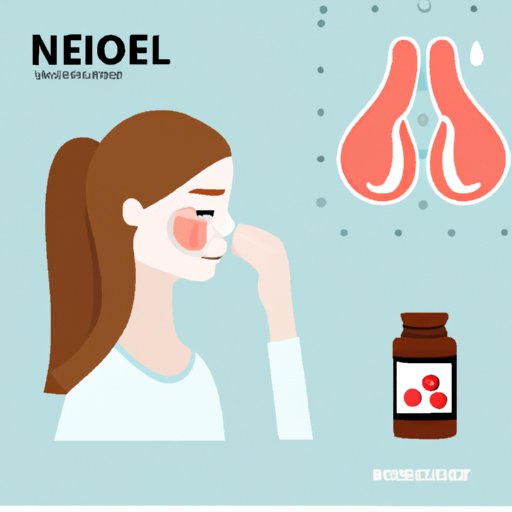
Introduction
If you have a keloid on your nose, you know how frustrating it can be. Keloids can happen due to surgery, injury, or piercing, and they can be tough to treat. They are raised, thick, and often on the nose, which can affect your confidence. In this article, we will explore tips and strategies to get rid of a keloid on your nose.
Understanding Keloids
Keloids are an overgrowth of scar tissue that forms at the site of an injury or surgical incision. They develop when the body produces too much collagen, making the scar tissue thicker and more prominent. Keloids can be red, pink, or flesh-colored, and they often extend beyond the boundaries of the original wound. They are challenging to treat because they tend to recur even after being removed or treated.
At-Home Remedies
At-home remedies can be effective in reducing the size and appearance of keloids on the nose. Tea tree oil has anti-inflammatory and antiseptic properties that make it useful in treating keloids. Aloe vera is another remedy that can be useful in treating keloids as it contains antioxidants and anti-inflammatory properties. Vitamin E oil is another remedy that is effective as it helps to moisturize the skin and promote healing. Apply these remedies directly to the keloid on the nose and gently massage the area for a few minutes. You can repeat this process twice a day for several weeks to see results.
Over-the-Counter Options
If at-home remedies do not work, you can try over-the-counter options such as corticosteroid creams or silicone sheets. Corticosteroid creams are applied directly to the keloid on the nose and help to reduce inflammation and itchiness. Silicone sheets work by creating an environment that prevents the keloid from growing. After washing and drying the area, apply the silicone sheets and leave them on for several hours a day. Both options take several weeks to show results and require consistent use.
Medical Procedures
If at-home remedies and over-the-counter options do not work, you may need to consider medical procedures such as cryotherapy, laser treatment, or surgery. Cryotherapy involves freezing the keloid with liquid nitrogen to reduce its size and appearance. Laser treatment uses wavelengths of light to shrink the keloid. Surgery involves cutting out the keloid and suturing the skin back together. All these procedures come with risks such as infection and recurrence. Discuss with a dermatologist what option is right for you.
Prevention Strategies
If you have a history of keloids, you need to take steps to prevent them from developing. Avoid piercings or tattoos on the nose as they can lead to keloids. If you undergo surgery, talk to your doctor about preventive measures. After surgery, use silicone sheets or pressure garments to prevent keloids from developing.
Psychological Effects
Keloids can impact a person’s emotional well-being, causing anxiety and affecting self-image. It can be challenging to talk to others about it, leading to social isolation. Speak to a therapist or counselor who can help you cope with the psychological effects of keloids.
Real-Life Stories
You are not alone in your experience with keloids on the nose. Many people have dealt with keloids and shared their stories on online forums. It can be helpful to read about other people’s experiences and how they’ve coped with keloids. Remember that everyone’s situation is different and that you should seek professional guidance for your specific situation.
Conclusion
In conclusion, keloids on the nose can be frustrating and challenging to treat. At-home remedies, over-the-counter options, and medical procedures can all be effective in reducing the size and appearance of keloids. Take preventive measures, and speak to a therapist or counselor if keloids are impacting your emotional well-being. Remember that there is hope, and you can seek professional guidance if necessary.





